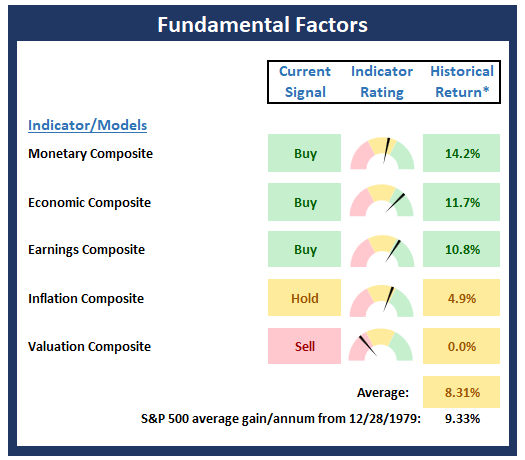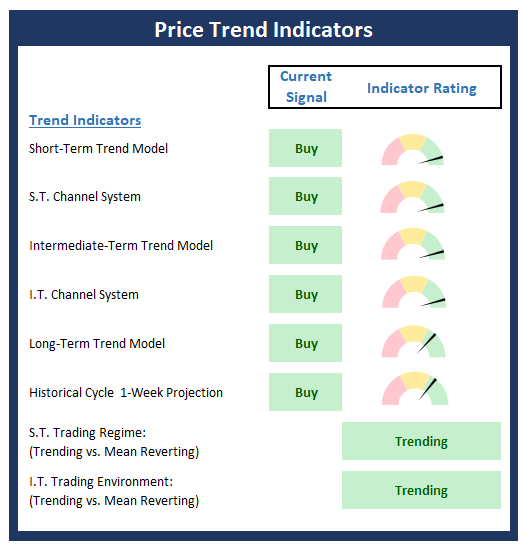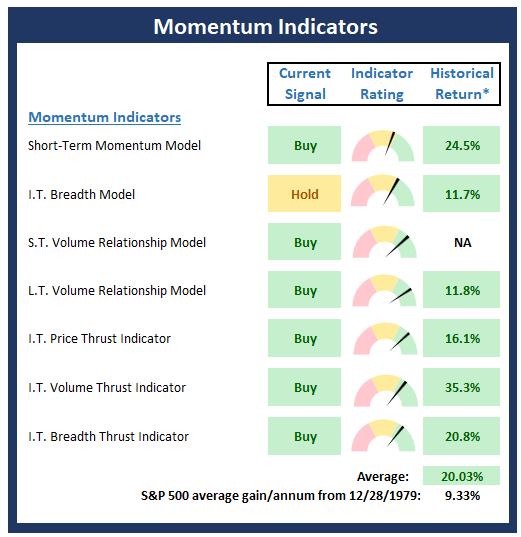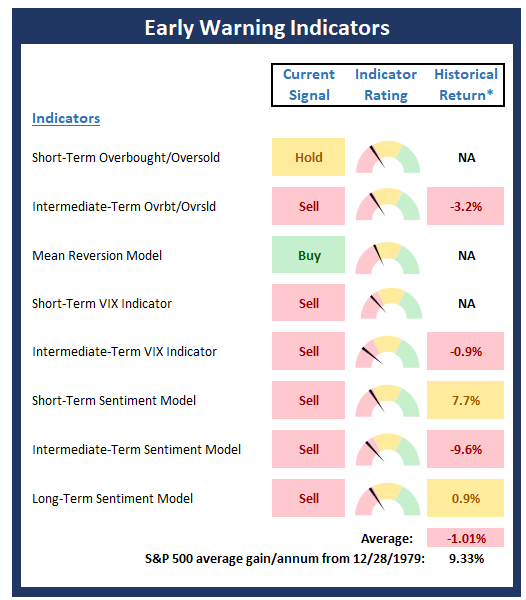Don’t look now fans, but the first half of 2025 is in the books. As we embark on the second half of the year, I thought it would be a good idea to review the key areas of analysis for the stock market.
Such a review includes my Primary Market indicators (which are designed to identify the state of the primary cycle of the stock market), our Fundamental Factors (areas that have been known to drive stock prices on a long-term basis), the Trend models (which tell us about the overall technical health of the market’s trend), the Momentum indicators (which help determine if there is any “oomph” behind a move in the market), and our Early Warning models (which are designed to suggest when the market may be ripe for a reversal on a short-term basis).
The idea here is to review all the key components of the market to make sure we have a firm grasp on the overall “state of the market” – from various lenses and timeframes.
So, without further ado, let’s get started.
Primary Market Models
This is a group of my favorite/most trusted market models that have proven useful over the years in determining which team is in control of the game from a long-term perspective.

As you can see from all the green on this indicator board, all but one of these models suggest that the bulls remain large and in charge at this stage of the game. From a big-picture perspective, this tells me to give the bulls the benefit of any doubt and to use pullbacks as opportunities.
Fundamental Factors
Below is a summary of key external factors that have been known to drive stock prices on a long-term basis.

There is also a lot of green on the Fundamental indicator board. However, there are a couple flies in the ointment: Inflation and Valuations.
On the front, there is nothing to really worry about at this stage. Our models, which did a very fine job of alerting us to the ramp in inflation post-COVID, are currently suggesting that inflation factors are starting to percolate. As such, this is something to keep an eye on.
Stock market valuations are another kettle of fish. The bottom line here is the stock market is very overvalued and has been so for quite some time. But… Valuations are notoriously bad “timing” indicators as the stock market can stay overvalued for many years at a time. In addition, interest rates play a major role in this area of analysis. Cutting to the chase, as long as rates behave, valuations can remain elevated.
Finally, one of my favorite Wall Street cliches appears to apply here: “Valuations don’t matter until they do. And then they matter a lot!” So, for now, we aren’t overly worried about valuations. But we aren’t ignoring them either!
The Current Trend
Below are the ratings of our key trend indicators. This board of indicators is designed to tell us about the overall technical health of the market’s trend. I.E. Which team currently has possession of the ball.

This board tells us to abide by another very famous Wall Street saying: “The trend is your friend!” And with all the green on this board, what’s not to like? (Spoiler Alert: The answer is just below in the “Early Warning” section.)
Momentum Indicators
Below is a summary of market’s internal momentum indicators, which help determine if there is any “oomph” behind a move in the market. The key here is to understand that the best moves in the market are accompanied by strong momentum.

Once again, this board is almost universally green. As such, there really isn’t much to complain about at this time. Going forward, we will be keeping an eye out for any divergences between price and momentum, which could alert us to potential trouble down the road.
The “Early Warning” Board
Below is a summary of key early warning indicators, which are designed to suggest when the market may be ripe for a reversal on a short-term basis.

As alluded to above, the market DOES have some issues that ought to concern traders from a near-term perspective. In short, stocks are VERY overbought, and investor sentiment has reached extreme levels. Historically, this combination has often been a precursor to pullbacks, corrections, or what I often refer to as a “sloppy period.”
But before you run out and move everything to cash in preparation for the next decline, it is important to understand that an overbought condition does NOT mean stocks will decline in the near-term. As the saying goes, “a market can stay overbought longer than shorts can stay solvent!”
It is also worth noting that there is something called a “good overbought” condition. This is where stocks get overbought and STAY overbought for some time. (Think of a stochastic oscillator that moves into the upper reaches on the chart and stays high without moving below neutral for months.) When this occurs, it tells us that money is continuing to come into the market and/or there is no real reason to sell. As such, a “good overbought” condition can be a bull’s best friend.
The Bottom Line
But, But, But… (You had to know that was coming.) We remain in an environment that is susceptible to news. No, the market doesn’t react to every headline/tweet the way it did earlier in the year. However, given the fluidity of the situation regarding tariffs and geopolitical tensions, this most definitely isn’t a “set it and forget it” type of market cycle.
For me, the key is to understand that this is NOT a low-risk environment, and we need to remain alert for something negative to come out of the woodwork that could potentially change the game. But for now, my plan is to stay seated on the bull train and give our heroes in horns the benefit of the doubt.
Thought for the Day:
“Comparison is the thief of joy” -Theodore Roosevelt
Wishing you green screens and all the best for a great day,
***
Disclosures
At the time of publication, Mr. Moenning held long positions in the following securities mentioned: None – Note that positions may change at any time.
NOT INDIVIDUAL INVESTMENT ADVICE. IMPORTANT FURTHER DISCLOSURES
